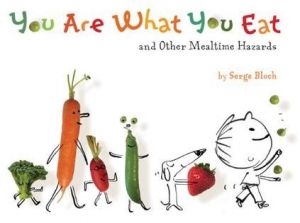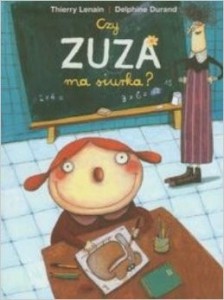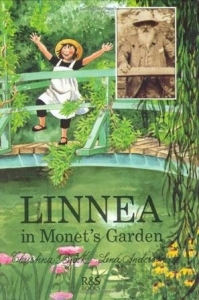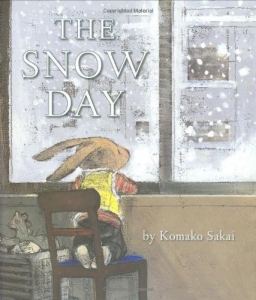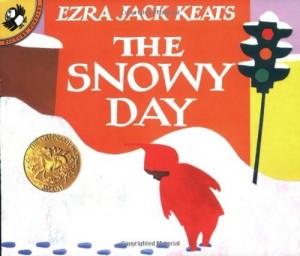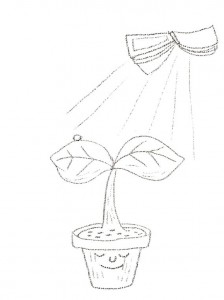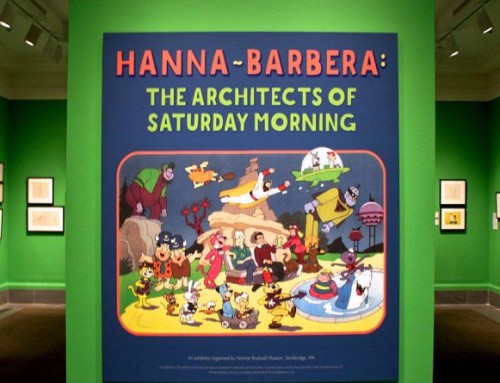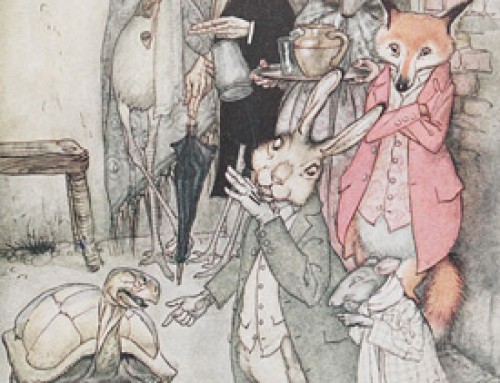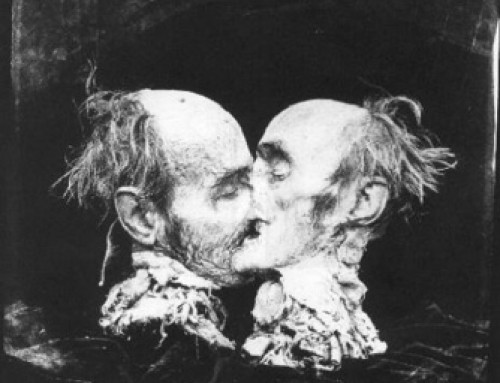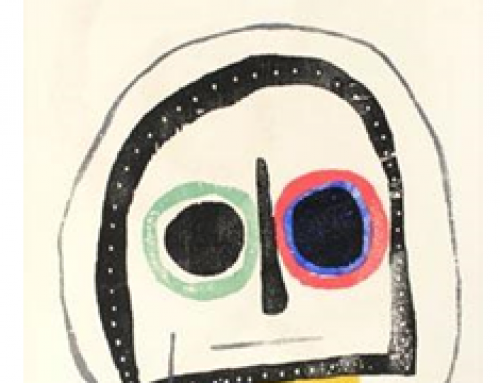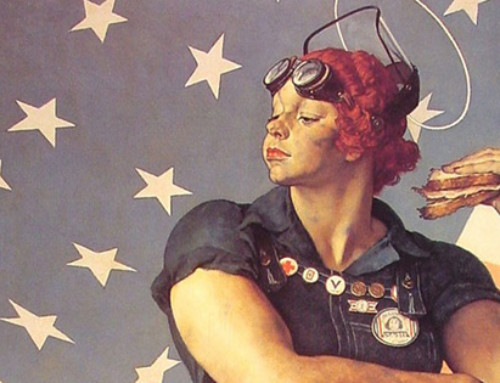By Fengchu Mu, grad student MICA’s MFA Illustration Practice, Fall 2013, Critical Seminar Final Paper
Picture Books in Childhood, Treasures for Lifetime
For my childhood, one of the most precious memories is that my father hugged me on the balcony and read the stories in the Andersen fairy tales collection to me. Although I could not read all the words in the book, the abundant illustrations in it captivated me, and gave me a lot of inspiration to become the illustrator I am now. The fairy tales collection was very thick with almost 500 pages, and the brilliant combination of pictures and words also made it into a picture books collection.
The picture book is an art form that combines pictures and words, a simple, short story book which has illustrations in it. Picture books often aim at young children and most of their contents are also proper for children to read. As for picture books, according to Nikolajeva and Scott, the unique characteristic of them as an art form is based on the combination of two levels of communication, the visual and the verbal (1).The responsibility for a picture book illustrator is to present the story in a visually perfect way. Being perfect doesn’t mean that, the art work must be very complex or detailed; it means that, the illustrator needs to use the picture to help the author (the author can be the illustrator him/herself) of the picture book tell the story well, and at the same time, give the readers some space to imagine. Styles are still very important, but in my opinion, it’s not a standard to measure the quality of a picture book. Some people do simple styled images, and they are still very popular for their being clear, imaginative and educational enough for children to read. As soon as picture books are understood by children and impress children in a good way, the author and artist fulfil their obligations, and the functions that the picture books embody.
A good picture book often has excellent literary merit and aesthetic merit at the same time. According to Nikolajeva and Scott, they can be educational for socialization or language acquisition. For instance, in the picture book You Are What You Eat And Other Mealtime Hazards by Serge and Bloch, the artist Bloch uses witty and wonderful images, which mix whimsical line drawings with photographs of inanimate objects, so that everything is clear and simple enough for children to understand. The author uses familiar mealtime scene to teach children slang terms like “a piece of cake”, “apple of one’s eyes”, and “the spice of life.” As the combination of words and pictures is so clever, the picture book will leave readers of all ages “pleased as punch”, and give children a deep impression of language. Although this picture book cannot contain all of the slang, but its function of arousing children’s interest of learning language is significant.
Another good example of an educational picture book is in French, called as Czy Zuza Ma Siurka? (Does Zuza on earth have a penis or not?), in which Delphine Durand drew the pictures and Thierry Lenain wrote the story. This picture books starts with mammoths as an example; a boy in the picture book first holds the opinion that, being a male mammoth with penis is more powerful, and the female mammoth which has no penis is weaker than the male ones. So he thinks that girls are weaker than boys because they don’t have a penis. However, the girl, Zuza is totally different from the other girls, she climes the tree, plays the football, and runs faster than the boys. The boy is wondering if some girls like Zuza also have penises as they are stronger than boys, and takes an exciting adventure to answer his question. In China, talking about sex with children used to be taboo; parents feel shy to have a conversation of this topic with their children even now. But what if children raise this kind of question about sex? I think this book is just the key. The combination of the artist’s exaggerated character design and the author’s interesting story, not only attracts children’s attention to read (or ask parents to read the story for them), but also gives an appropriate anatomical instruction to them. At the end of the story, the boy finally figures out that boys have something and girls also have something; they are equal. To tell children the idea that boys and girls are equal at their young age is also meaningful for the development of their life in my opinion.
Another function of picture books is that they give children aesthetic enjoyment and influence children’s ability of valuing beauty. Picture books are better for children to read than other kinds of publications. The reasons are, first of all, the words are not high-level; high-level words are much more accurate, but they may become the obstacle for children to understand, remember and retell the story. Secondly, the marvelous pictures can inspire children’s thoughts and interests towards the new things, they help children to feel, learn, and love the world. Some of the picture books don’t focus much on the function of education, like the wordless picture books or purely narrative picture books. They dare to choose nontraditional styles to present stories; I think the courage originates from the authors’ and artists’ desire to give children a good influence towards aesthetic. Research shows that large amounts of people’s tastes toward beauty are mostly formed from what they have seen in their childhood.
Linnea in Monet’s Garden by Cristina Bjork (author) and Lena Anderson (illustrator) is a good example. This is a picture book about a girl’s visit to the painter Claude Monet’s garden. The artist takes the girl’s travel schedule as a clue and introduces Monet’s famous works in his own pace. The story is excellent, but, the most “original and charming” (New Yorker) part is the smart and fitting combination of Lena’s watercolor and Monet’s master pieces. It’s almost impossible for children to find an art book about Monet to read themselves, to learn what is Impressionist and the use of color. However, through reading or being read to, they can get in touch with fine art subtly, and have a general idea of it. There is some chance that the young readers don’t understand it at all, but some influence will still happen, which is little —- many a little makes a mickle.
There are another two examples, which are a Japanese picture book The Snow Day by Komako Sakai and an American picture book The Snowy Day by Ezra Jack Keats–both Sakai and Keats are authors and illustrators of these books. They are all marvelous picture books which depict the scenes of snow days. Sakai’s brushstroke is random and subtle. Her composition is dramatic and imaginative. She loves to draw bunnies; her bunny characters are cute and a little sentimental. Unlike most of picture books, in which the characters are sassy and outgoing, Sakai’s characters are silent even when they are happy, a characteristic of Japanese picture books. Perhaps for excessively outgoing children, this kind of picture books can make them quiet down and think about the miracle of world. In comparison, The Snowy Day is much more graphic. In a like manner, both of the stories show the kids’ curiosity towards a snow day. However, Ezra Jack Keats preferred to use a more terse way to present the story. His color contrast is strong and bold, the red hood, blue sky and snow white ground. They are contrasting but in harmony. In this picture book, the little red hood guy is so excited about the snow day and has done a lot of crazy and funny things on snow days. Later, the picture book was transferred into an animation with melodic music which can give a much deeper impression for children’s ability of valuing beauty. Through them, we can conclude, even the same theme and, similar stories can appear very different, because artists have the freedom to depict them in totally unique ways. However, there’s one thing they need all keep in mind that if their art works will give children a good influence in potential. Though we cannot say a picture book is bad as the target audiences are different; we definitely can ask the artist to make picture book better for children to read.
Good picture books are very important for one’s childhood in conclusion. Fortunately, there are millions of picture books targeting varied groups of audiences in the world with different themes and function–by reading them children can learn about lost and found items. love and hate, the universe, and the mind. Picture books have different kinds of possibilities and potentials. If parents take advantage of them in their children’s preschool education, their children will harvest something precious in their lifetime.


